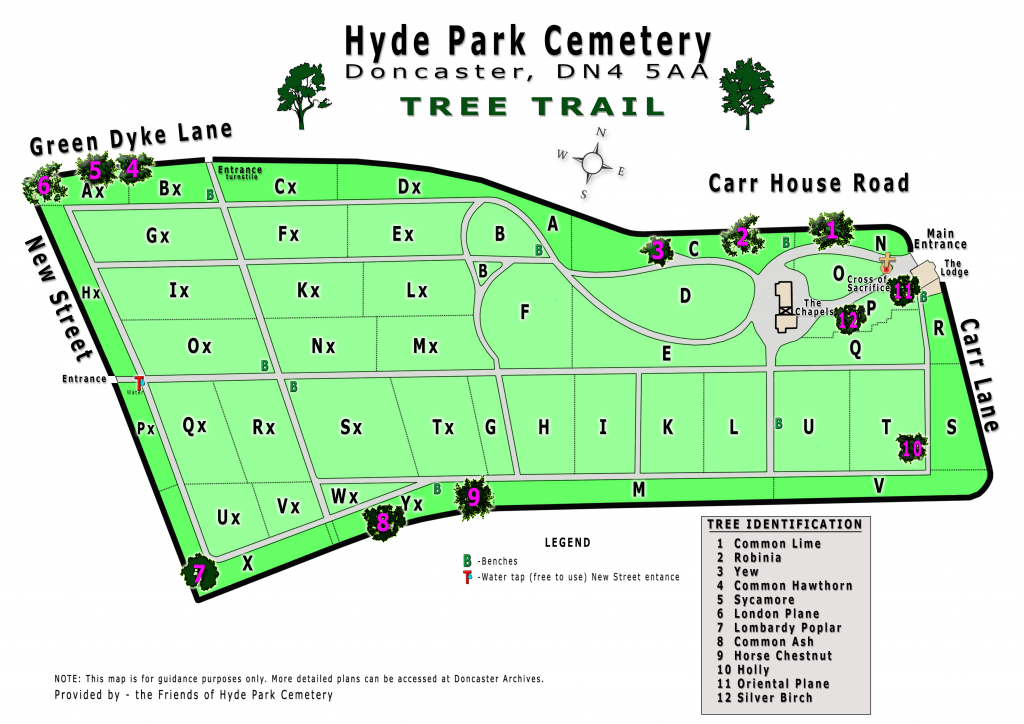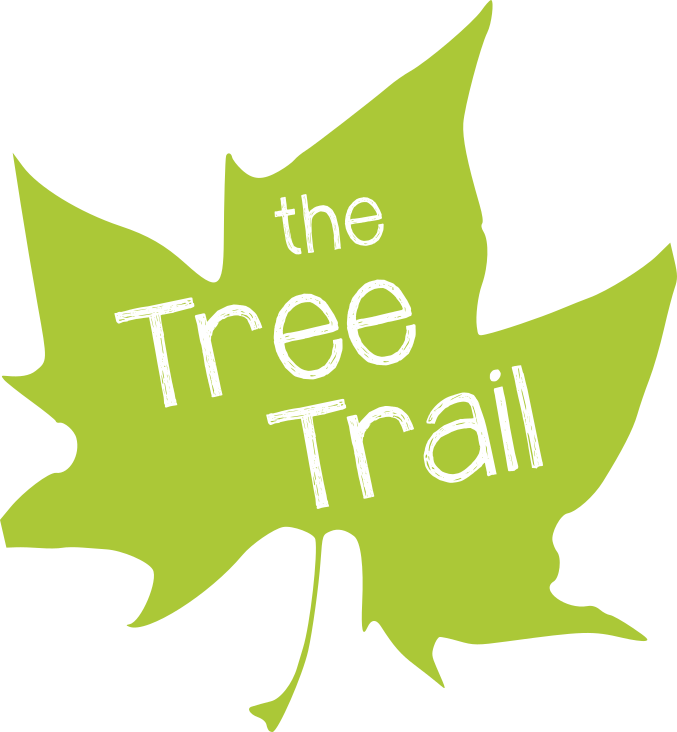
The Hyde Park Cemetery Tree Trail
Below is a plan of the Tree Trail, followed by details of the 12 tree specimens that form the Trail.
You can download a full colour leaflet, including the plan plus details of all the trees, at this link.
Hard copies of this leaflet are available from Doncaster Tourist Information Centre, 1 Priory Place, Doncaster, DN1 1BN and from Adrian Welch Glass & Glazing (opposite the cemetery’s main entrance on Carr Lane)
Click on the above map to open a larger version in a new tab.
1. Common Lime
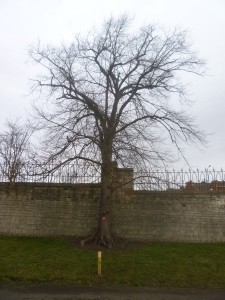
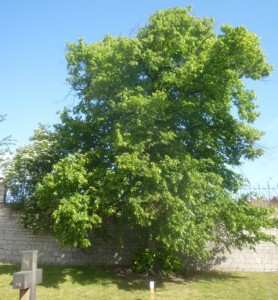 A tall, deciduous, broadleaf tree, the Common Lime is native to the UK and parts of Europe. It is a hybrid between the small-leaved and large-leaved limes. Leaves are dark green in colour, heart-shaped and flimsy.
A tall, deciduous, broadleaf tree, the Common Lime is native to the UK and parts of Europe. It is a hybrid between the small-leaved and large-leaved limes. Leaves are dark green in colour, heart-shaped and flimsy.
During WW2 lime blossom was used to make a soothing tea. Lime wood is soft and light and finely textured. It is easy to work and often used in turnery, carving and furniture making. Lime bark was traditionally used to make rope and lime flowers were considered a valuable source of food for honeybees. The wood does not warp and is still used today to make sounding boards and piano keys.
2. Robinia
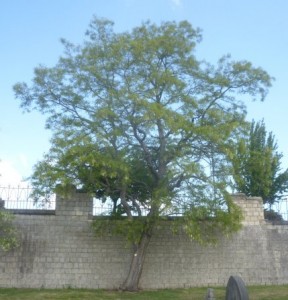
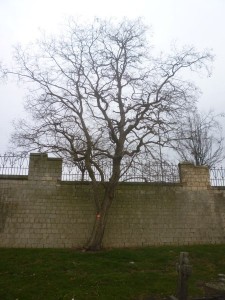 The Robinia is native to North America and Northern Mexico and can grow up to 25 metres tall. They are vigorous, suckering trees and shrubs, sometimes thorny, with pinnate leaves and pea-type flowers in early summer. Robinia is, in fact, a member of the pea family. Its flowers hang in dense clusters (racemes) and are a rich source of nectar for bees. Once the flowers have gone, brown, leathery pods up to 11cm long are formed. These pods remain on the tree until the following year. Robinia bark is deeply furrowed. The tree is tolerant of many soil types.
The Robinia is native to North America and Northern Mexico and can grow up to 25 metres tall. They are vigorous, suckering trees and shrubs, sometimes thorny, with pinnate leaves and pea-type flowers in early summer. Robinia is, in fact, a member of the pea family. Its flowers hang in dense clusters (racemes) and are a rich source of nectar for bees. Once the flowers have gone, brown, leathery pods up to 11cm long are formed. These pods remain on the tree until the following year. Robinia bark is deeply furrowed. The tree is tolerant of many soil types.
3. Yew
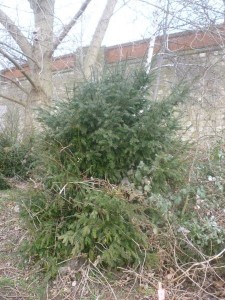
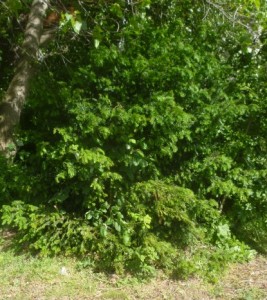 The Yew is an evergreen conifer native to the UK, Europe and North Africa. Mature trees can grow to up 20 metres tall. The bark is reddish-brown with purple tones and peeling. Leaves are straight, small needles with a pointed tip. A Yew can reach up to 600 years of age. Ten Yew trees in Great Britain are believed to pre-date the 10th century. The fruit is eaten by birds such as the blackbird, mistle thrush, song thrush and fieldfare, and small animals such as squirrels and dormice. Yew trees have long been associated with churchyards and were planted on the graves of plague victims to protect and purify the dead. The trees were used as symbols of immortality, but also seen as omens of doom. For many centuries it was the custom to carry Yew branches on Palm Sunday and at funerals.
The Yew is an evergreen conifer native to the UK, Europe and North Africa. Mature trees can grow to up 20 metres tall. The bark is reddish-brown with purple tones and peeling. Leaves are straight, small needles with a pointed tip. A Yew can reach up to 600 years of age. Ten Yew trees in Great Britain are believed to pre-date the 10th century. The fruit is eaten by birds such as the blackbird, mistle thrush, song thrush and fieldfare, and small animals such as squirrels and dormice. Yew trees have long been associated with churchyards and were planted on the graves of plague victims to protect and purify the dead. The trees were used as symbols of immortality, but also seen as omens of doom. For many centuries it was the custom to carry Yew branches on Palm Sunday and at funerals.
4. Common Hawthorn
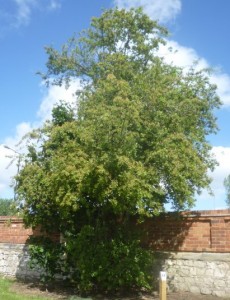
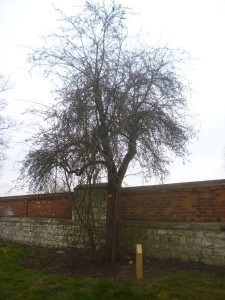 Also known as the May-tree, due to its flowering period, the Common Hawthorn is the only British plant named after the month in which it blooms. Its flowers are eaten by dormice and provide nectar and pollen for bees and other pollinating insects. The haws are rich in anti-oxidants and are eaten by many migrating birds, including redwings, fieldfares and thrushes, as well as small mammals. The dense, thorny foliage makes fantastic nesting shelter for many species of birds. A deciduous tree native in the UK/Europe, the Common Hawthorn can reach a height of 15 metres. Flowers are highly scented, white or occasionally pink, with five petals. Twigs are slender, brown and covered in thorns.
Also known as the May-tree, due to its flowering period, the Common Hawthorn is the only British plant named after the month in which it blooms. Its flowers are eaten by dormice and provide nectar and pollen for bees and other pollinating insects. The haws are rich in anti-oxidants and are eaten by many migrating birds, including redwings, fieldfares and thrushes, as well as small mammals. The dense, thorny foliage makes fantastic nesting shelter for many species of birds. A deciduous tree native in the UK/Europe, the Common Hawthorn can reach a height of 15 metres. Flowers are highly scented, white or occasionally pink, with five petals. Twigs are slender, brown and covered in thorns.
5. Sycamore
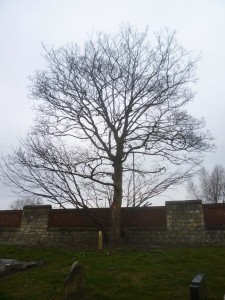
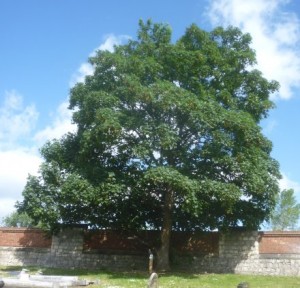 Sycamore timber is hard and strong, pale cream and with a fine grain. It is used for making furniture and kitchenware, as the wood does not taint or stain the food. Trees are planted in parks and large gardens for ornamental purposes. Mature trees are extremely tolerant of wind and so are often planted in coastal and exposed areas, as a wind break. They are also tolerant of pollution and are, therefore, planted in towns. A native tree to Central, Eastern and Southern Europe, the Sycamore can grow to 35 metres and can live for 400 years. Twigs are pink-brown and hairless. The leaves have five lobes and leaf stalks of younger trees are characteristically red.
Sycamore timber is hard and strong, pale cream and with a fine grain. It is used for making furniture and kitchenware, as the wood does not taint or stain the food. Trees are planted in parks and large gardens for ornamental purposes. Mature trees are extremely tolerant of wind and so are often planted in coastal and exposed areas, as a wind break. They are also tolerant of pollution and are, therefore, planted in towns. A native tree to Central, Eastern and Southern Europe, the Sycamore can grow to 35 metres and can live for 400 years. Twigs are pink-brown and hairless. The leaves have five lobes and leaf stalks of younger trees are characteristically red.
6. London Plane
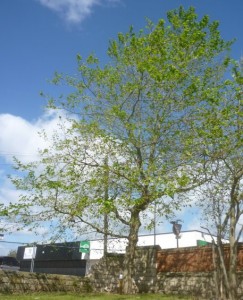
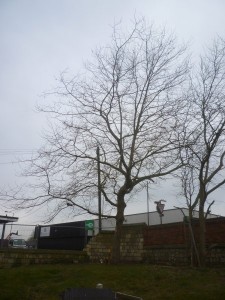 The origin of this the London Plane is not quite known. It is thought to be a hybrid of the Oriental Plane and the American Plane and was brought here from Spain in the 17th century. It can be difficult to distinguish from the Oriental Plane. Very little wildlife is associated with London Plane, although the seeds may be eaten by grey squirrels. Male and female flowers are borne in separate clusters on the same tree. Found growing in city parks and streets, the London Plane is planted for its ability to adapt to urban conditions and its resistance to pollution. It can grow to 35 metres tall and live for several hundred years. Leaves are leathery and thick, with five triangular lobes.
The origin of this the London Plane is not quite known. It is thought to be a hybrid of the Oriental Plane and the American Plane and was brought here from Spain in the 17th century. It can be difficult to distinguish from the Oriental Plane. Very little wildlife is associated with London Plane, although the seeds may be eaten by grey squirrels. Male and female flowers are borne in separate clusters on the same tree. Found growing in city parks and streets, the London Plane is planted for its ability to adapt to urban conditions and its resistance to pollution. It can grow to 35 metres tall and live for several hundred years. Leaves are leathery and thick, with five triangular lobes.
7. Lombardy Poplar
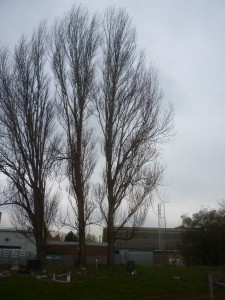
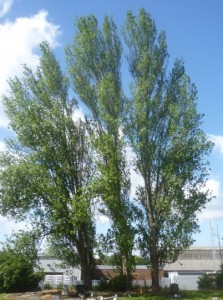 A member of the willow family, the Lombardy Poplar tree requires large amounts of water and the females make quite a mess when they shed their cones. Male trees are most commonly planted and reproduce from cuttings. Lombardy Poplars are fast-growing trees, growing as much as 2 metres per year, with near vertical branches and a narrow growth-form. This makes them a popular choice when people want ‘living wall’ privacy screens or windbreaks in a hurry. A deciduous tree, the Lombardy Poplar can grow to 30 metres tall. It has bright green ovate leaves and crimson male catkins before the leaves open in early spring. Originally propagated from cuttings from a tree in Italy in the 18th century, it is now found across the world.
A member of the willow family, the Lombardy Poplar tree requires large amounts of water and the females make quite a mess when they shed their cones. Male trees are most commonly planted and reproduce from cuttings. Lombardy Poplars are fast-growing trees, growing as much as 2 metres per year, with near vertical branches and a narrow growth-form. This makes them a popular choice when people want ‘living wall’ privacy screens or windbreaks in a hurry. A deciduous tree, the Lombardy Poplar can grow to 30 metres tall. It has bright green ovate leaves and crimson male catkins before the leaves open in early spring. Originally propagated from cuttings from a tree in Italy in the 18th century, it is now found across the world.
8. Common Ash
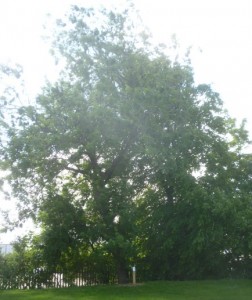
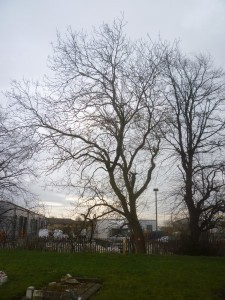 The Ash tree was thought to have medicinal and mystical properties and the wood was burned to ward off evil spirits. In Norse Viking mythology, Ash was referred to as the ‘Tree of Life’. Even today it is sometimes known as the ‘Venus of the woods’. In Britain we regarded Ash as a healing tree. The wood is often used for making tool handles as it absorbs shock without splintering. Found across Europe from the Arctic Circle to Turkey, it is the third most common tree in Britain and can grow to a height of 35 metres. The leaves comprise opposite pairs of light green, oval leaflets with long tips.
The Ash tree was thought to have medicinal and mystical properties and the wood was burned to ward off evil spirits. In Norse Viking mythology, Ash was referred to as the ‘Tree of Life’. Even today it is sometimes known as the ‘Venus of the woods’. In Britain we regarded Ash as a healing tree. The wood is often used for making tool handles as it absorbs shock without splintering. Found across Europe from the Arctic Circle to Turkey, it is the third most common tree in Britain and can grow to a height of 35 metres. The leaves comprise opposite pairs of light green, oval leaflets with long tips.
9. Horse Chestnut

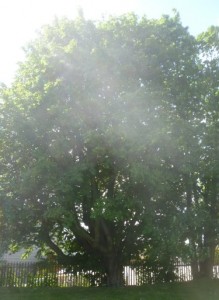 The Horse Chestnut’s leaf stalks leave a scar on the twig when they fall, which resembles an inverted horse shoe with nail holes. This association with horses could explain why conkers used to be ground up and fed to horses to relieve them of coughs and it could be the origin of the tree’s name. Other uses of conkers include additives to shampoos and as a starch substitute. A broadleaf tree native to the Balkan peninsula, it was introduced to Britain in the 1600s. It can grow to a height of around 28 metres and can live for up to 300 years. The leaves comprise five to seven pointed, toothed leaflets spreading from a central stem.
The Horse Chestnut’s leaf stalks leave a scar on the twig when they fall, which resembles an inverted horse shoe with nail holes. This association with horses could explain why conkers used to be ground up and fed to horses to relieve them of coughs and it could be the origin of the tree’s name. Other uses of conkers include additives to shampoos and as a starch substitute. A broadleaf tree native to the Balkan peninsula, it was introduced to Britain in the 1600s. It can grow to a height of around 28 metres and can live for up to 300 years. The leaves comprise five to seven pointed, toothed leaflets spreading from a central stem.
10. Holly
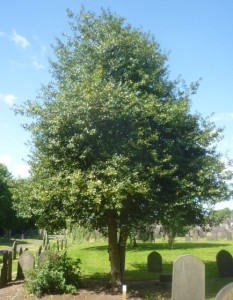
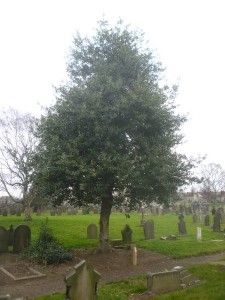 Holly branches have long been used to decorate homes in winter. The tree was seen as a fertility symbol and a charm against witches, goblins and the devil. It was thought to be unlucky to cut down a Holly tree. Holly provides dense cover and good nesting opportunities for birds, while its deep, dry leaf litter may be used by hedgehogs and small mammals for hibernation. The Mistle thrush is known for vigorously guarding the berries of Holly in winter to prevent other birds from eating them. It is an evergreen shrub with spiked leaves. Native in the UK and across Europe, North Africa and Western Asia, trees can grow up to 15 metres tall and live for 300 years. Leaves are dark green, glossy and oval though younger plants have spiky leaves.
Holly branches have long been used to decorate homes in winter. The tree was seen as a fertility symbol and a charm against witches, goblins and the devil. It was thought to be unlucky to cut down a Holly tree. Holly provides dense cover and good nesting opportunities for birds, while its deep, dry leaf litter may be used by hedgehogs and small mammals for hibernation. The Mistle thrush is known for vigorously guarding the berries of Holly in winter to prevent other birds from eating them. It is an evergreen shrub with spiked leaves. Native in the UK and across Europe, North Africa and Western Asia, trees can grow up to 15 metres tall and live for 300 years. Leaves are dark green, glossy and oval though younger plants have spiky leaves.
11. Oriental Plane
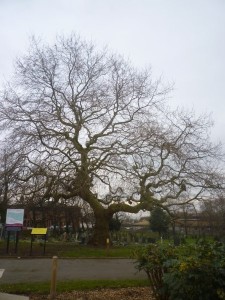
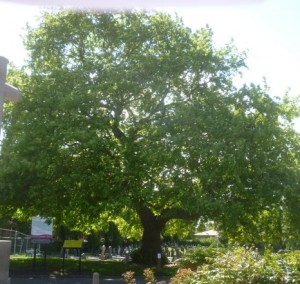 The wood of the Oriental Plane has been used commercially for furniture (Oriental Plane veneer is sold as ‘lacewood’), barrels and crates. Native Americans have been said to have used infusions prepared from Oriental Plane as a general remedy for all illnesses. The Oriental Plane has also been planted in Hindu holy places. The tree is widespread in the east and southern Europe. It is a deciduous tree that can grow up to 30 metres tall. The leaves are fresh green and usually lobed. The leaf stalk is shorter than that of the London Plane tree and the leaf margin is smooth.
The wood of the Oriental Plane has been used commercially for furniture (Oriental Plane veneer is sold as ‘lacewood’), barrels and crates. Native Americans have been said to have used infusions prepared from Oriental Plane as a general remedy for all illnesses. The Oriental Plane has also been planted in Hindu holy places. The tree is widespread in the east and southern Europe. It is a deciduous tree that can grow up to 30 metres tall. The leaves are fresh green and usually lobed. The leaf stalk is shorter than that of the London Plane tree and the leaf margin is smooth.
12. Silver Birch
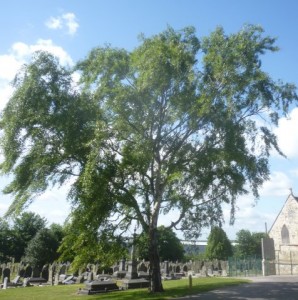
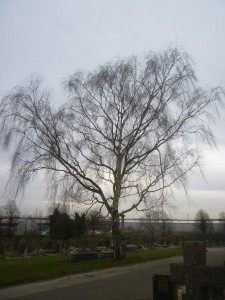 The Silver Birch can be used to improve soil quality for other plants to grow. Its deep roots bring otherwise inaccessible nutrients into the tree, which are recycled on to the soil surface when the tree sheds its leaves. Silver Birch provides food and habitat for more than 300 insect species. Woodpeckers and other hole-nesting birds often nest in the trunk, while the seeds are eaten by siskins, greenfinches and redpolls. The Silver Birch is a deciduous tree native throughout the UK/Europe. It can grow as far south as Spain and as far north as Lapland and can reach 30 metres in height. The white bark sheds layers like tissue paper. Light green leaves are small and ovate with a toothed edge.
The Silver Birch can be used to improve soil quality for other plants to grow. Its deep roots bring otherwise inaccessible nutrients into the tree, which are recycled on to the soil surface when the tree sheds its leaves. Silver Birch provides food and habitat for more than 300 insect species. Woodpeckers and other hole-nesting birds often nest in the trunk, while the seeds are eaten by siskins, greenfinches and redpolls. The Silver Birch is a deciduous tree native throughout the UK/Europe. It can grow as far south as Spain and as far north as Lapland and can reach 30 metres in height. The white bark sheds layers like tissue paper. Light green leaves are small and ovate with a toothed edge.

